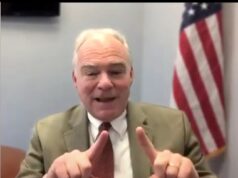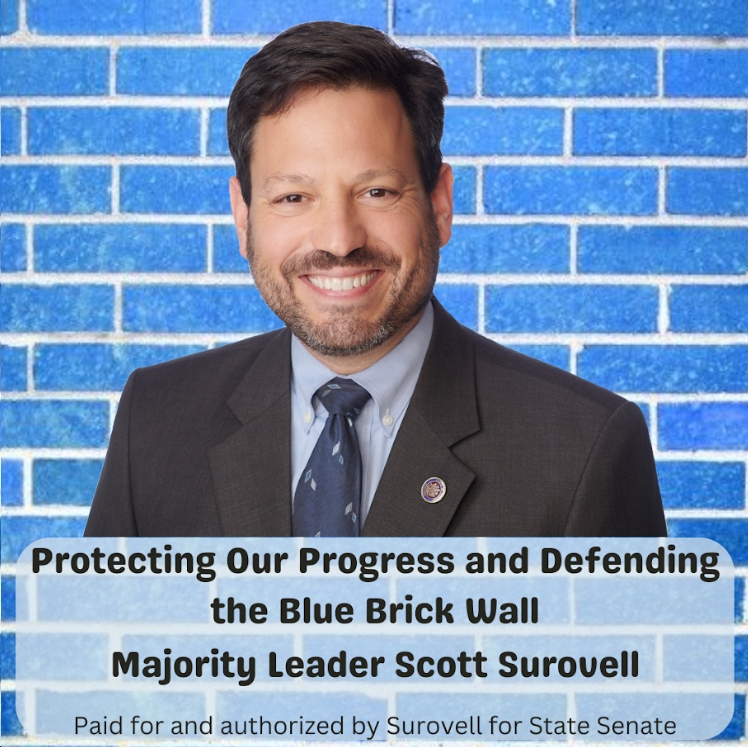by A Siegel
Governor Northam has a real opportunity – assuming he seizes it – to set Virginia on a path toward increased prosperity, improved security, and global leadership this fall.
“Virginia law requires the Department of Mines, Minerals and Energy (DMME) to write a ten-year Energy Plan in the first year of every new administration. The statute lists vague requirements for the plan, including that it be consistent with the Commonwealth Energy Policy, itself a toothless statute. That means each new governor can pretty much tell DMME what to focus on.”
Comments for the 2018 Virginia Energy Plan are due today. by 11:59 pm Friday.
This plan creates an opening for the Northam Administration to put Virginia on the path to a prosperous, energy smart, climate resilient future … an opportunity to be seized.
There is not, already, a plan to comment on, which means that the door is open for “give us your best ideas”. As a DMME official explained in a note to me the other day:
- THINK
- Holistically
- Big
- About Value Streams
- LEVERAGE
- Virginia’s assets
- Others’ successes, approaches, momentum
- The power of smart regulation
- REVISIT AND RETHINK
- Ways and pace of doing business
- Old Concepts
- STIMULATE
- Green education
- Leverage energy to boost rural economies/communities
- Foster innovation (including start-ups)
- Lead
- By example
- By result
- Fiscally, energy resiliency, environmentally
With the 2018 Virginia Energy Plan (VEP), the Northam Administration has the opportunity to create a road map for a prosperous, energy resilient, climate-friendly Virginia. It is an opportunity to seize … rather than let slip away.
Thinking through the themes …
The following is a brief discussion of the above themes.
- THINK
- Holistically: Energy is embedded through our lives and how we approach energy has rippling impacts. Too often, decisions are made in a stove-piped fashion. The biggest value streams from “greening an office,” for instance, aren’t in the reduced energy bills, but in improved productivity from happier, healthier employees. Energy is not “just” about coal, solar, gas, nuclear, but also about water systems; about job production; about better designed/implemented transportation (from bike lanes to electric buses to better synchronized street lights); to zoning to encourage walkable communities; to …many things. The VEP must approach energy in a holistic manner.
- Big: While a substantive plan requires outlining discrete, incremental changes – such as a measure modifying “net metering” rules to allow homeowners to install more solar power than they use to enable covering future demand growth (like buying an electric car) – the VEP should lay out a substantive vision for real change, for cleaning up our energy system while creating jobs, rather than simply be a shopping list of incrementalism. As part of that “big” thinking, the plan should look to global opportunity and challenge — most notably climate change — and lay out how Virginia’s plan will have global impacts if executed.
- About Value Streams: There are a wide space of value streams from smart energy approaches. Reducing pollution improves health which leads to a happier (and wealthier/more productive) population. Smart energy approaches will create jobs and boost economic performance. Cleaner, higher quality, and more resilient electrons will boost business performance. And …the VEP should speak to these value streams — energy planning is FAR from just accounting for energy’s retail pricing.
- LEVERAGE
- Virginia’s assets: From significant offshore wind resources and (perhaps) the nation’s best region for an offshore wind industry (Hampton Roads/Norfolk/Newport News) to a strong nuclear power industry to biomass to high-quality universities with students impassioned about supporting a move to a clean energy economy, Virginia has substantive resources to support far more aggressive moves into a 21st century energy system.
- Others’ successes, approaches, momentum: Around the world, there are amazing paths and policies. Israel, not surprisingly, has a discrete fund based to support innovation in water systems that has helped drive Israel to one of the most efficient economies in water use while boosting an globally powerful industry that creates jobs and boosts the economy. That fund is easy for innovators to access (at early stages) unlike virtually every innovation fund in the United States (and Virginia). How about D2 (Danish, Dutch) approaches to bicycling? How about … Leverage others to increase success here.
- The power of smart regulation. Virginia should leverage regulation to advance a cleaner, more prosperous energy system. Other states and many municipalities are leveraging regulations more aggressively to advance energy systems in ways that reduce pollution and strengthen economic performance. Some building code / regulation examples:
- From neighboring states, the District of Columbia and Montgomery County requirements for building to high-energy/environmental performance standards in office and government structures. This is creating jobs in the communities, reducing pollution loads, and these high-performance buildings are leading to increased rental rates / commercial activities as businesses choose to locate in them.
- Requirements for buildings to have on-site renewable energy generation (as an example, California’s requirement for all new single-family housing (if possible) to have solar panels).
- Requirements for flat roofs to have reflective roofing, solar panels, and/or green roofs.
- Aligned with VEP recommendations, the Governor’s Office should establish a Task Force to study other states’ actions, examine which are in accord with existing Virginia law and could be implemented by regulation, and which are worth pursuing but required legislative action. The Task Force should be established for 2019 through 2022, with a charter to deliver initial potential legislative action by November 15, 2019.
- REVISIT AND RETHINK
- Ways and pace of doing business: From a utility structure that encourages promoting energy use to the regulated utility model guaranteeing a profit on capital investments (even if they were developed using faulty (if not outright false) data and assumptions) to limitations in using building regulation to drive positive change to a slow and deliberate decision-making process (that leaves the Commonwealth well below the pace of energy/technological innovation), the “system” has many ways of business built into ‘it’ that inhibit moving forward to a better energy system. The VEP should examine such issues and include explicit discussion of these challenges with roadmaps toward a better operating system.
- Old Concepts: A number of “old” and “faulty” assumptions remain too close to the core of (Virginia) energy thinking. For example, even with electric vehicles, the growth of decentralized energy production and improved energy efficiency undermines planning based on increased electricity demand indefinitely into the future. Another faulty assumption is that there is such a thing as clean fossil fuels. While lower polluting at the street level than, say, diesel, “natural gas” is a fossil fuel that pollutes and does NOT represent a “bridge to a clean energy future,” even as (too) many people continue to think it does so.
- STIMULATE: The VEP should incorporate elements to stimulate Virginia’s economy into the future through accelerating achievement of a clean energy system. Here are some elements:
- Green education: Greening the school house is essentially the sole path to reliably boost student performance while lowering costs and achieving a wide range of other benefits (from reducing pollution to improving health to boosting employment to…). The VEP should strongly promote greening Virginia’s school system(s) over the coming 10 years.
- Leverage energy to boost rural economies/communities: There is a major disconnect in Virginia: urban areas are seeing strong economic performance while rural areas are, writ large, stagnating. Simply put, coal will not return and will not lead to a booming rural economy. However, a range of appropriate policies could improve Virginia’s rural economy while fostering a cleaner, more resilient energy system. These could include aggressive energy efficiency in rural areas; clean energy programs for farms (think solar panels on barns); biomass energy programs; etc. The VEP should have a section of how clean energy investments can help bridge the urban-rural economic divide.
- Foster innovation (including start-ups). Virginia should become far more aggressive in supporting early-stage energy opportunities — fostering an environment that will encourage Virginians to develop energy innovations and an environment (including test facilities, proving grounds, financing, etc.) that puts Virginia in the leadership in clean-energy T2M (technology to market).
- Lead
- By example
- By result
- Fiscally, energy resiliency, environmentally
Addendum …
To add my voice to those calling for specific measures, here are just a few:
- Solar
- Solar prices have plunged. Increasingly, so far as to lower cost than existing infrastructure for delivering electrons. While progress is being made, Virginia still has too many obstacles to enabling business owners, local communities, and individuals from making the move to clean energy (and lower costs).
- As a partial path forward, the VEP should call for the default planning guidance for all state-funded (fully or partially — such as schools) buildings to have solar power systems. From schools to rest stops to libraries to prisons to recreation centers to coliseums, public facilities (a) have meaningful electricity loads and (b) typically have extensive, flat roof space. Planners should have to explain, explicitly, why solar power is not included in building plans rather than have to make extra effort to include it. That ‘default’ will rapidly boost solar penetration in the public space.
- VEP should
- call for legislation that would allow the Legislature to mandate solar integration into — for example — flat rooftops across the Commonwealth.
- provide a roadmap for creating a mandate similar to California’s rooftop solar program for housing construction.
- layout the potential ‘duck curve’ (that increased penetration of solar power leads to excess electricity in the mid-day period) issues for Virginia along with road mapping a path for addressing these to create opportunity as solar production increases (such as battery storage at public facilities; long-term storage options; introduction of power management leveraging smart grid systems; etc.).
- Storage
- A parallel (following?) price and technology revolution is in storage options. Having decentralized storage enables better grid performance, enables lowering costs and reduced pollution, and provides resiliency against disruption (whether natural or man-made).
- The VEP should call for a look to integration of energy and emergency planning. Consider: what if every Virginia high school, police & fire station, recreation center, and other key public facility had enough combined solar power and battery to provide basic services in a grid disruption (like occurred in much of the Commonwealth for Hurricane Isabelle)? Citizens without power would have places for refuge, emergency services would not be disrupted, our lives would be more secure … for, oh by the way, almost certainly at a lower cost to the taxpayer than the existing electricity delivery to these public facilities.
- Wind
- Virginia has the opportunity has huge potential wind power resources, and the VEP should outline a far more aggressive path forward than what is occurring with Dominion Power. The ‘progressing’ 12 megawatt ‘demonstration project’ might have made sense 10 (or even as recently as 5) years ago but is laughable in the face of offshore wind progress and plunging prices around the world. The 12 megawatts will be quite high cost — providing ammunition to those fighting clean energy — while teaching us little about offshore wind technology (the lessons and knowledge exists elsewhere). While others around the world and nation are pressing forward with offshore wind seriously (with ever-lowering prices), the idea that the first increment of a ‘major’ project won’t even be submitted for review until 2022-23 is only sensible if one seeks to keep as much space open, as possible, for extended reliance on fossil fuel electricity.
- Land-based wind power: While not high-quality wind, Virginia should consider a program to foster towers with (relatively small) wind turbines and cellular phone antennas on farms along highways and areas with poor internet/cell coverage. The combination of these two revenue/public utility streams make this a worthwhile value proposition. In another “combination,” the VEP should call for a research program (with commercial demonstration projects) on combining wind power with underground constructed hydropower in SW Virginia (where the best Virginia onshore wind power resources are … along with mountains and coal miners who could use their mining skills to advance a clean energy future while boosting their community’s economy.)
- Establish a serious, aggressive, mandatory Renewable Portfolio Standard (RPS). Virginia is behind the curve, nationwide, in its planned move toward a clean energy grid. From Hawaii to Alaska to New York to…, state after state has (far) more aggressive plans. And, they are finding their electricity systems operating more reliably and costs falling (often plunging) in the process. The VEP should lay the basis for a serious, aggressive, mandatory RPS that will accelerate Virginia’s move to operating on clean electrons.
- Accelerate use VW Settlement fund and target electrification of fleet vehicles as the top priority. With ‘DieselGate’, VW had a legal settlement that included funds for states ($93M for Virginia) to reduce diesel fuel impacts. With a seemingly quite deliberate process, after several years, the Governor’s office just announced the planned use of 15% of that money for a(n unclear) electric vehicle charging station program. The resources should be leveraged more rapidly to support paths to reduce diesel fumes across the Commonwealth in ways that provide a leap ahead to a smart energy future. In this space, perhaps one of the most exciting arenas is electrified buses. Just a few years ago, it might have been difficult to justify moving municipal (and school and prison and …) buses from diesel to electricity. Now, as per making solar default option on rooftops, every fleet bus decision should start with the premise that electric is the way to go — unless there is good reason not to. The VW Settlement fund should be leveraged to accelerate the move to electric public bus fleets. While there are a range of benefits from EV buses (including much higher passenger satisfaction), they very clearly address the core of the VW settlement: reduce human exposure to the serious health hazards of diesel fumes.
- Evaluate the fracked-gas pipelines in holistic manner — and be prepared to stop them.
- A holistic look at the two major natural gas pipelines almost certainly would show them to be a bad investment for Virginia and Virginians — even if Dominion shareholders might see a large profit.
- “Stranded assets”: Every day provides evidence that natural gas will not be a competitive electricity generation option in more markets than expected just a short time ago. The emergent numbers related to solar, wind, and storage certainly suggest that Virginia’s reliance on natural gas (for electricity generation and heating) would fall if Dominion doesn’t lock in higher cost and higher pollution natural gas into the rate base.
- Pollution: These pipelines will foster higher local and global pollution. We are already seeing failures to control pollution in the construction process and know that, if completed, these pipelines would have the impact of some 50 additional coal plants (essentially, more than doubling Virginia’s total greenhouse gas emissions).
- Risk: Both due to direct financial costs in today’s market and the potential for future carbon taxes, these pipelines create high risk for Virginia and Virginians — a risk that can be avoided.
- This Virginian states with high confidence that a true, independent look at them will show that they are not in Virginia and Virginians interest on economic, environmental, security, and risk grounds. We can — and must — do better. The VEP is a path for making this clear.
- A holistic look at the two major natural gas pipelines almost certainly would show them to be a bad investment for Virginia and Virginians — even if Dominion shareholders might see a large profit.
NOTE: The majority of this post submitted to DMME VEP comment.



 Sign up for the Blue Virginia weekly newsletter
Sign up for the Blue Virginia weekly newsletter






![Audio: In Town Hall, Rep. Bobby Scott (D-VA03) Asks If Trump Might Refuse to “relinquish power,” “cancel the [2028] election”; Wonders If There are 5 SCOTUS Justices Who “have the backbone to rule that we have a democracy and we’re not giving it away”](https://bluevirginia.us/wp-content/uploads/2025/02/bobbyscott0220-100x75.jpg)
